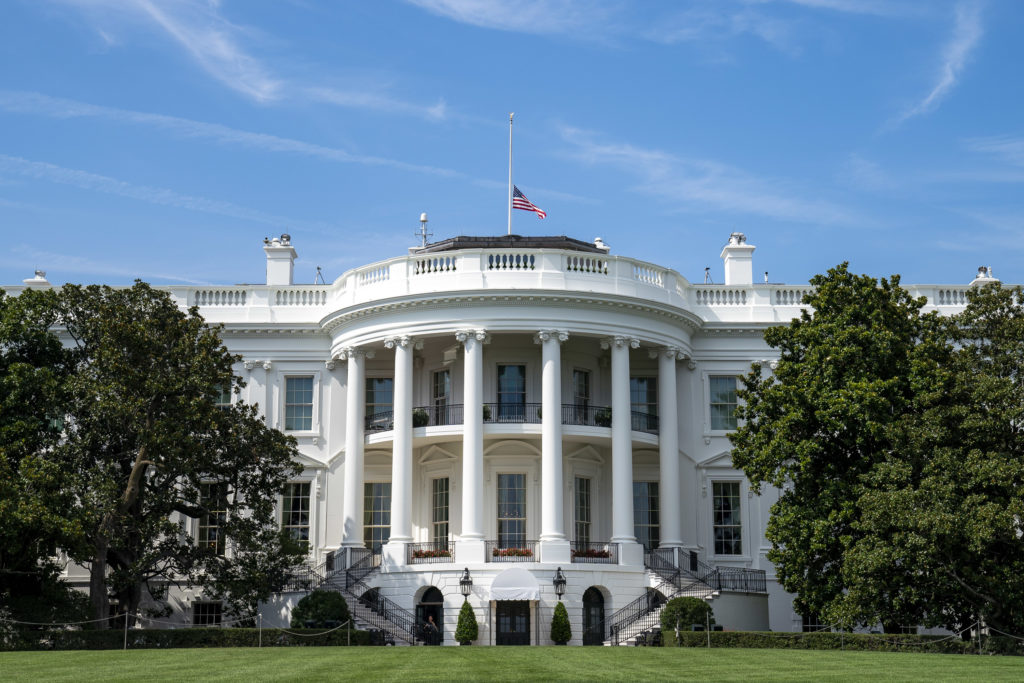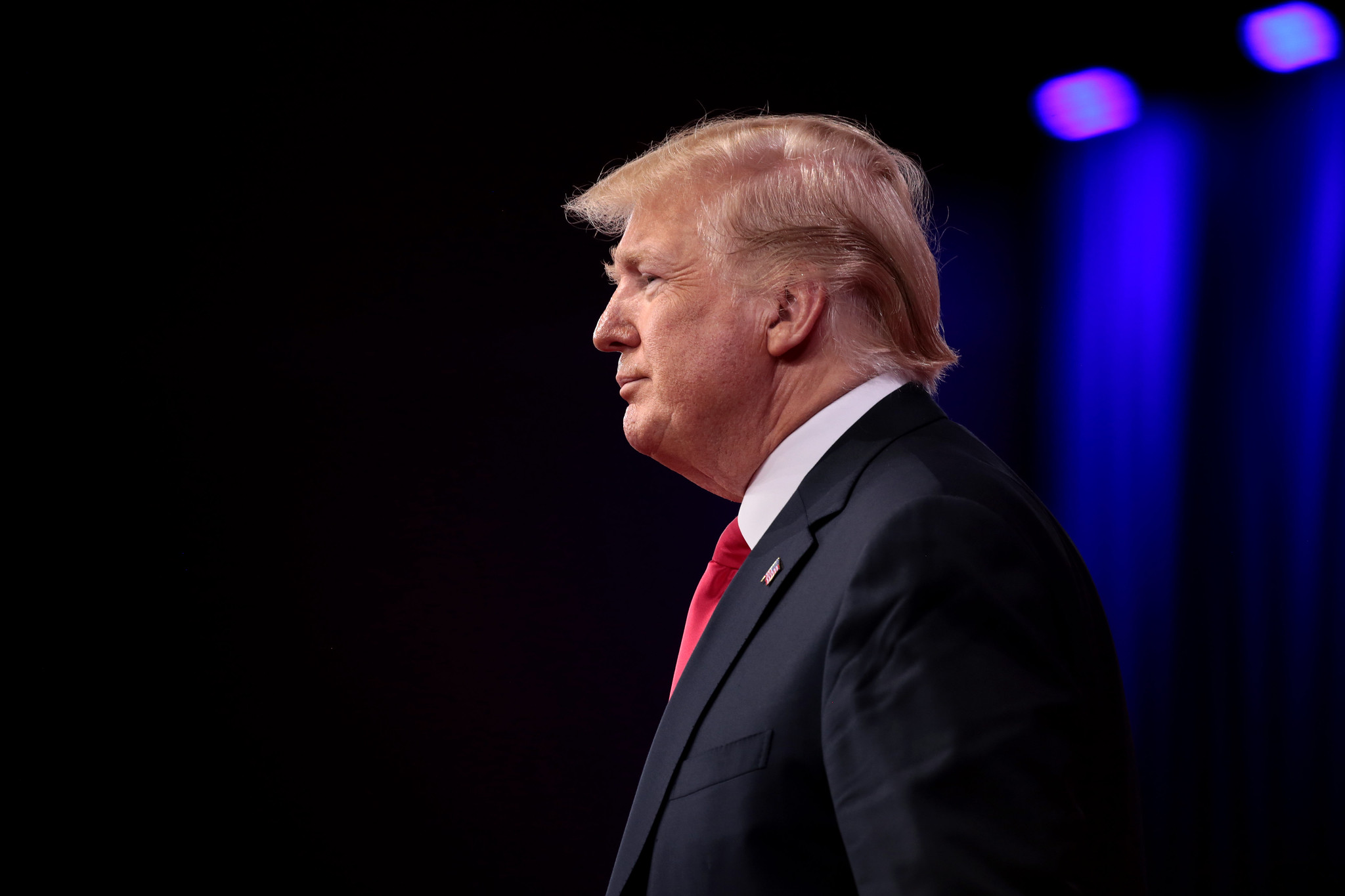Chaos at the State Department: Tillerson Is Out, Pompeo Is In—and Everybody Is Confused
Editor's note: This article has been updated to reflect ProPublica's continued reporting on Gina Haspel's involvement in the CIA's enhanced interrogation program and its retraction of the assertion that she oversaw the waterboarding of Abu Zubaydah in 2002.
Published by The Lawfare Institute
in Cooperation With

Editor's note: This article has been updated to reflect ProPublica's continued reporting on Gina Haspel's involvement in the CIA's enhanced interrogation program and its retraction of the assertion that she oversaw the waterboarding of Abu Zubaydah in 2002.
Early Tuesday morning, President Trump announced that he had removed Rex Tillerson as secretary of state. According to the president’s tweet, CIA Director Mike Pompeo will replace Tillerson, and Pompeo’s deputy, Gina Haspel, will move into the director position. Haspel, a career CIA officer, would be the first woman to serve as director of the CIA if confirmed.
Mike Pompeo, Director of the CIA, will become our new Secretary of State. He will do a fantastic job! Thank you to Rex Tillerson for his service! Gina Haspel will become the new Director of the CIA, and the first woman so chosen. Congratulations to all! — Donald J. Trump (@realDonaldTrump) March 13, 2018
Rumors of Tillerson’s imminent departure have circulated for months. Nevertheless, Trump’s decision appears to have surprised the press corps—and the State Department. White House officials informed the Washington Post that “Trump last Friday asked Tillerson to step aside,” but State Department Undersecretary for Public Diplomacy and Public Affairs Steve Goldstein indicated that “the Secretary did not speak to the President and is unaware of the reason” for his dismissal. (The White House soon fired Goldstein as well.) The Wall Street Journal reports that the White House called Tillerson back from his diplomatic tour of Africa on Friday but did not inform him that he had been dismissed until Trump’s Tuesday tweet—and the AP writes that Tillerson’s Friday heads-up included a vague warning from White House Chief of Staff John Kelly about an upcoming presidential tweet.
Tillerson has long had a tense relationship with the president, with whom he has clashed repeatedly over matters of both policy and style, including on such signature Trump administration initiatives as withdrawing from the Paris Agreement and relocating the U.S. Embassy in Israel to Jerusalem. The low point seemed to come when reports surfaced in October that Tillerson had called Trump a “fucking moron”—reportedly following a meeting in which Trump informed national security officials that he wanted a dramatic increase in the U.S. nuclear arsenal.
This week, Tillerson made another move that appeared to contradict Trump by taking a hard line with Russia, a step that Trump has at times proven reluctant to pursue. After U.K. Prime Minister Theresa May announced Monday that it was “highly likely” the Kremlin was behind the apparent use of a nerve agent against former Russian operative Sergei Skripal and his daughter in the United Kingdom, the White House voiced its support for the U.K. but held off from backing its attribution of the attack. Later in the day, however, Tillerson announced that Skripal’s poisoning “clearly came from Russia” and would “certainly trigger a response.” While reporting on Tillerson’s exit hasn’t pointed to these comments as a reason for his dismissal—which may have been planned before the Monday statement—the timing is, at a minimum, an exceptional coincidence.
Along with Tillerson’s departure, Pompeo’s move from the CIA to the State Department is abrupt but not entirely unexpected. The New York Times reported as early as November that Trump was seeking to replace Tillerson with Pompeo. The CIA director has been vocally hawkish on a variety of policy issues, including Iran and North Korea. In addition, he has made a point of maintaining a close relationship with the president, to an extent that has reportedly raised concerns within the traditionally apolitical agency over Pompeo’s willingness to engage in partisan politics.
For these reasons, Pompeo is likely to be a controversial nominee in some circles. Nonetheless, he was confirmed as CIA director by a vote of 66-32, suggesting an ability to draw some Democratic support in the coming confirmation hearings. Haspel, meanwhile, has not previously been confirmed by the Senate. She has also drawn criticism for her role overseeing the interrogation of Abu Zubaydah and Abd al-Rahim al-Nashiri in the early days of the CIA’s post-9/11 enhanced interrogation program. Sen. John McCain quickly put out a statement critical of her role in that program and indicating his intent to push her on it during her confirmation hearing. On the other hand, Sen. Dianne Feinstein, who produced the Senate report on enhanced interrogation, has said that Haspel “has been a good deputy director of the CIA.”
Pompeo’s hawkish views and proximity to Trump are likely to be viewed skeptically by mainstream foreign policy hands, many of whom have expressed reservations toward both Pompeo and the president. Nonetheless, his appointment may be received more favorably by many in the beleaguered State Department, which was increasingly weakened by staffing shortages and sidelined from policy discussions during Tillerson’s tenure. If Pompeo is able to use his relationship with the president to serve as a more effective advocate for the State Department’s policy equities and its institutional interests, then he may quickly win over State Department personnel who have become increasingly demoralized under Tillerson.
One fact is unavoidable: Pompeo’s new role would make him an even more central figure in U.S. national security discussions, a change that is likely to have ramifications for a number of policy issues. Several stand out because of differences between Tillerson and Pompeo’s positions and because of their proximity to the pending transition.
Foremost among these is the Joint Comprehensive Plan of Action (JCPOA), better known as the Iran nuclear deal. Tillerson and Trump reportedly clashed over the plan on several occasions, disagreeing both on the degree to which Iran was in violation and the actions that the United States should pursue in response. Trump acknowledged these disagreements in explaining his decision to remove Tillerson; Tuesday morning he said that, in contrast to Tillerson, he and Pompeo “have a similar thought process.” In January, Trump set up a possible end game for the nuclear agreement, issuing what he asserted would be the last waiver of U.S. sanctions—a regular action required by the JCPOA—unless Congress and the other parties to the agreement implement several significant changes. The next waiver is due in mid-May, and it’s not clear what progress has been made toward meeting Trump’s demands. Tillerson may have pushed for additional time or otherwise sought to ameliorate the consequences of a non-waiver if this deadline comes to pass without Trump’s demands being met. But Pompeo, a vocal critic of the agreement, seems less likely to do so.
Another issue of special concern is Russian accountability. During his tenure, Tillerson repeatedly went further than Trump in calling out and condemning Russian actions, including its interference in the 2016 U.S. elections. His statement Monday on Skripal’s poisoning is only the most recent example. In contrast, Pompeo has shown himself more willing to toe the president’s line on Russia issues, at one point going so far as to mischaracterize intelligence community assessments regarding Russia’s impact on the 2016 elections in a manner that aligns with Trump’s own statements.
Pompeo would also be taking over at an incredibly sensitive moment in U.S. relations with North Korea. After months of bellicose rhetoric toward Pyongyang—reportedly another point of tension with Tillerson—Trump surprised his own advisers last Thursday by announcing his intent to meet with North Korean leader Kim Jong Un in May. Tillerson reportedly cut short a trip to Africa in order to return home and prep for the summit, as he openly acknowledged it would be a heavy lift to adequately prepare given the short timeframe. The added challenge of transitioning from Tillerson to Pompeo—particularly in the absence of a Senate-confirmed U.S. ambassador to South Korea, Special Representative for North Korea Policy or relevant assistant secretary of state—is likely to add substantially to this burden.
Finally, it is unclear what Tillerson’s removal will mean for what has become his signature policy effort: State Department reform. Although he initially planned a potentially major overhaul of the State Department’s structure and operations, Tillerson dramatically scaled back expectations last month. Yet he has continued a practical freeze on hiring and promotions, alongside other unpopular personnel restrictions, in part to satisfy an Office of Management and Budget mandate for reducing the State Department budget and staffing. Tillerson also declined to fill—or was refused nominees for—a wide range of leadership positions, leaving the department bereft of much of its usual senior and mid-level leadership. It is unclear to what extent Pompeo would continue these efforts or whether his warmer relationship with President Trump will help alleviate some of the outside pressure on the State Department’s operations.
Because of the haphazard manner in which Tillerson was dismissed, it wasn’t immediately clear in the hours after Trump’s tweet who was acting as secretary of state. Tillerson cleared things up at an afternoon press conference Tuesday, announcing that his last day as secretary will be March 31. From the end of the day on Tuesday, March 13, until March 31, he will delegate all responsibilities to Deputy Secretary of State John Sullivan, who will serve as acting secretary. The plan is for Sullivan to head the department until Pompeo is confirmed.
Over at CIA, meanwhile, the Federal Vacancies Reform Act allows Haspel to begin work as acting CIA director immediately—even if she’s not confirmed by the time Pompeo departs for the State Department. Under 5 U.S.C. §3345(a)(1), the “first assistant” to a Senate-confirmed official—in Pompeo’s case, that’s Haspel as his deputy—automatically steps up to fill the vacant slot left by his or her superior in an acting capacity, even if the first assistant hasn’t been confirmed. That official may then serve for 210 days in the acting role. Usually, an acting official would have to step down from an acting role if formally nominated for that same Senate-confirmed position—but because Haspel is the first assistant, she’s exempt from that rule. The White House may find this provision of the Federal Vacancies Reform Act useful if Haspel faces a drawn-out confirmation battle.
To sum it up: The president has abruptly dismissed his secretary of state in the midst of several diplomatic crises, including rapidly escalating tensions between the U.K. and Russia over what appears to have been a state-sponsored assassination attempt. He did so by tweet. And he appears to have done so without first informing the secretary himself or anyone at the State Department. It’s a portrait of the Trump presidency in miniature—and it says a great deal that despite Tillerson’s rocky tenure as secretary, the manner of his exit is far from reassuring.






